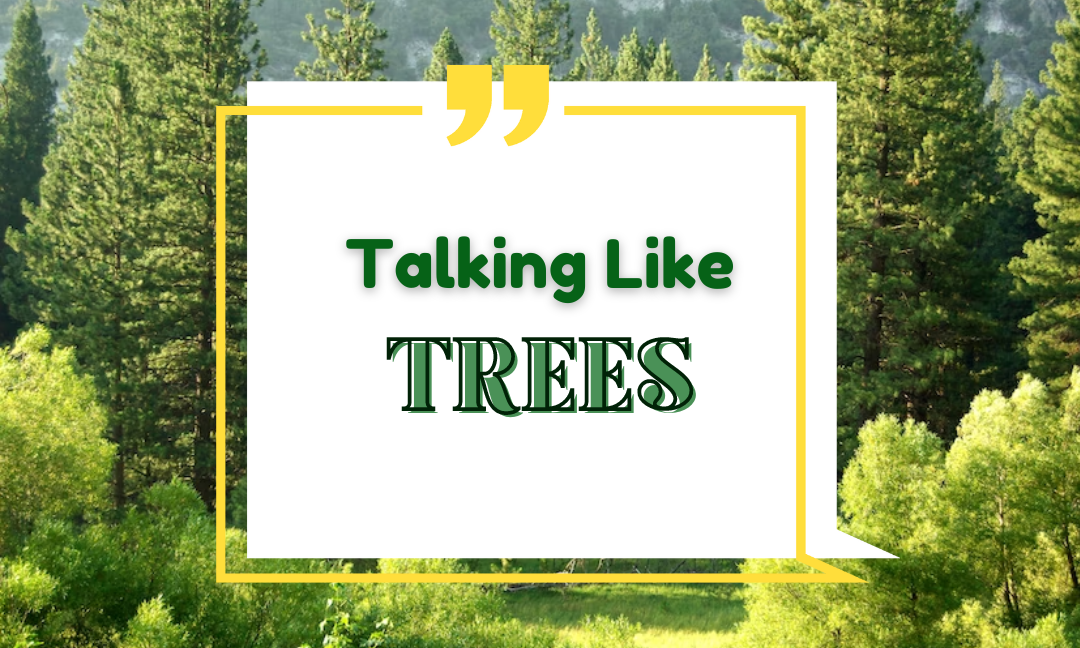Talking Like Trees
Written By: Alexandra Mitnick
Edited By: Sarah
Designed By: Nabiha
Published By: Linda Qi
Have you ever wondered what it would be like to talk to animals? How would they sound if you could translate their noises?
What about plants? They communicate, too. Their chemical language isn’t obvious to outsiders but scientists are discovering that it says plenty.
Plants have lived on Earth’s terrain for 450 million years, most of which spent with herbivores and microbial pathogens roaming alongside.
While humans can run away when in danger, plants don’t have that luxury. If plants wanted to thrive amidst predators, they needed to work as a group.
But a community can only function when its members cooperate; thus began the quest for communication.
As it turns out, the solution didn’t just involve the plant kingdom. Rather, it was a type of symbiosis between plants and fungi.
Observed in 92% of studied plant families, mycorrhizal symbiosis has become extremely commonplace and for good reason.
When a plant and mycorrhizal fungus are symbiotes, they can trade nutrients with each other such as carbon (from the plant’s photosynthesized sugar) and phosphorus (found in soil by a thin, branching part of the fungus called the Mycelium).
Additionally, and perhaps more importantly, multiple plants can be connected to the same fungal mycelium, creating a Common Mycelium Network (CMN) that allows them to message each other underground.
Many things can be sent through the CMN, most notably sugars for plants in the shade that can’t photosynthesize enough on their own and chemicals that warn other plants if one is under threat.
The tallest and oldest trees in a forest are also the ones best connected to the CMN. These
are called “hub” trees and they regulate how sugar gets transferred. Interestingly, hub trees
tend to allocate more sugar for trees from the same seeds as them. This could mean that
trees have their own version of families!
Considering the protective and nurturing benefits of CMNs, it is easy to see why seedlings that grow in them are more likely to reach maturity and are also generally healthier.
This breakthrough is still relatively recent, but there are already ideas about how we can apply our new knowledge of CMNs to create better farming and forestry practices.
One major example of this is the premise that, even though hub trees are the most valuable for timber, they should be conserved instead of cut down because of their importance to forest regrowth.
Our understanding of Mycorrhiza still isn’t perfect but as it improves we will be able to use it further in our efforts for a more sustainable future.
Now, let’s reflect on what we’ve learned: plants have been communicating for a very long time by using a very funky fungus.
How cool is that?
________________________
Works Cited
1. Gordon, O. [SciShow]. (2018, July 23). The Earth’s Internet: How Fungi Help Plants Communicate [Video]. YouTube. https://www.youtube.com/watch?v=_tjt8WT5mRs
2. RHODES, C. (2017). The whispering world of plants: ‘The Wood Wide Web’. Science Progress (1933-), 100(3), 331-337. https://www.jstor.org/stable/26406382
3. Hoeksema, J.D., Chaudhary, V.B., Gehring, C.A., Johnson, N.C., Karst, J., Koide, R.T., Pringle, A., Zabinski, C., Bever, J.D., Moore, J.C., Wilson, G.W.T., Klironomos, J.N. and Umbanhowar, J. (2010), A meta-analysis of context-dependency in plant response to inoculation with mycorrhizal fungi. Ecology Letters, 13: 394-407. https://doi.org/10.1111/j.1461-0248.2009.01430.x
4. Lanfranco, L., Fiorilli, V. and Gutjahr, C. (2018), Partner communication and role of nutrients in the arbuscular mycorrhizal symbiosis. New Phytol, 220: 1031-1046. https://doi.org/10.1111/nph.15230
5. Martin, F., Duplessis, S., Ditengou, F., Lagrange, H., Voiblet, C. and Lapeyrie, F. (2001), Developmental cross talking in the ectomycorrhizal symbiosis: signals and communication genes. New Phytologist, 151: 145-154. https://doi.org/10.1046/j.1469-8137.2001.00169.x
6. Mithöfer, A. and Boland, W. (2016), Do you speak chemistry?. EMBO rep, 17: 626-629. https://doi.org/10.15252/embr.201642301

